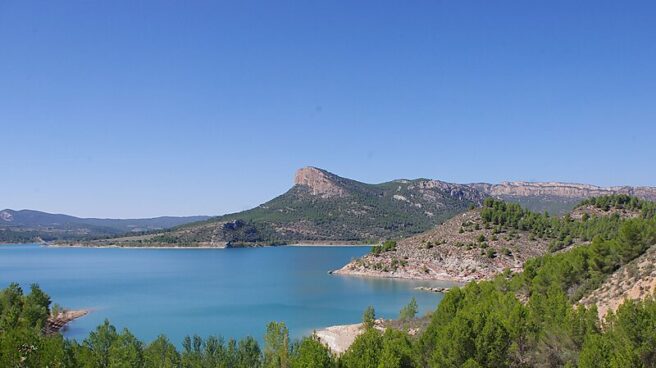

File photo of the Santa Ana Reservoir, Castiglionroy (Huesca)
The rains that have been falling in recent days have a positive effect on the water level in the reservoirs of Spain. According to the latest data from the Ministry of Ecological Transition and Demographic Challenges, the hydraulic reserve has increased by 765 m³ in the last week, which means growth 1.4%. This has led to the fact that the Spanish reservoirs are currently up to 35.7% of full power.
However, overall data for 2022 shows that this is a particularly dry year, which even the last rains could not compensate. Spain’s hydraulic reserve is currently 3,461 gm³ less than just a year ago. And if we make the same comparison with the average levels over the past decade in the second week of December, reservoirs in Spain are now 9,234 gm³ less.
The Ministry divides reservoirs according to their location into 18 different geographical zones. Of all of them only four of them now hold more water than last year on the same dates. (Migno Sil, Andalusian Mediterranean Basin, Jucar, Galicia Costa and Red, Odiel and Piedras). The last three, moreover, are the only districts that currently have a hydraulic reserve above the average for the last 10 years.
The state of hydroelectric power plants and constitutive reservoirs in Spain
There are two different types of tanks. On the one hand, water stored in hydroelectric dams are used to produce clean and renewable energy. These reservoirs currently hold 8,244 gm³ of water, so they account for 47.4% of their total capacity. In 2021, they were at the level of 52.5%, and on average over the past decade – 59.3%.
On the other hand, the water the constituent bodies of water are intended for human consumption and agriculture. Currently, they are loaded at 30.5%, while last year at this time they were at the level of 37%, and on average over the past decade – 49.3%.
How to View Hydraulic Reserve Data
The Ministry publishes a weekly so-called Hydrological Bulletin, a report in which details the current situation with tank stocks in Spain. In addition, they offer data to contextualize the numbers, with annual comparisons, graphs and maps, among other things. It uses data collected from the Hydrographic Confederations, the Community Hydraulic Offices, the State Meteorological Agency and the Red Eléctrica de España to develop it.
In the report which It has data from 1988 to the present.volumes stored in all reservoirs of the peninsula with a capacity of more than 5 hm3, as well as the state of operational systems, reserves intended for irrigation and supplying the population, accumulated hydroelectricity (theoretical calculation) and produced real, the flow of the main rivers of each basin and the weekly amount of precipitation according to AEMET.
Source: El Independiente